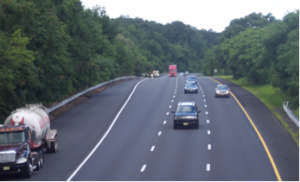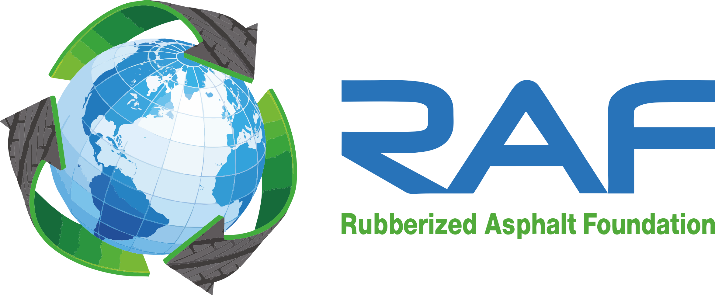In 2008, the New Jersey Department of Transportation placed an asphalt-rubber open graded friction course on a section of I-78 from east of Tunnel Road in Bethlehem to east of Beaver Brook in Clinton, New Jersey. Besides the many benefits of OGFCs, such as enhanced safety through better wet weather visibility, reduction of splash and spray, and better skid resistance, a major concern was to reduce highway noise.
In many sections of existing interstates, noise levels generated predominantly through tire/pavement contact has increased over the years, largely due to surface distress and roughness. Neighborhoods along the interstates are seeking relief and the thin rubber friction course overlays can help.
The Road Noise Group of New Jersey with the stated mission “to improve the quality of life in NJ (the most densely populated state in the US) by reducing noise pollution from our highways and motor vehicles” advocated for the use of the AROGFC for its lower sustained noise reduction characteristics.
The Center for Advanced Infrastructure and Transportation (CAIT) Rutgers, the State University of New Jersey measured the I-78 AROGFC and several other similar mixtures in the 2011 as part of Pavement Resource Program report for the NJDOT and provided the following observation:
“Therefore, based on the preliminary data, it would suggest that the AROGFC may be a better option over the MOGFC pavements. Even though the initial sound intensity level of the AROGFC was not as low as the MOGFC, it appears that the asphalt rubber additive may help to maintain the pavement for a longer service life by limiting the detrimental effects of asphalt age hardening, while retaining the noise mitigating properties over time.”
Rutgers has had similar low noise observations with rubberized asphalt friction courses in NJ with a notable study from Bennert, T., Hanson, D., Maher, A., and Vitillo, N., 2004 “Influence of Pavement Surface Type on Tire/Pavement Generated Noise” Journal of Testing and Evaluation, ASTM International, Vol. 33, No. 2, 94 – 100 pp. In this study the following conclusion was made: “A comparison of the open-graded friction course (OGFC) HMA surface courses, typically used to aid in reducing tire/pavement related noise, found that the OGFC mixes modified with crumb rubber attained the lowest noise levels.”

Image courtesy of Mark Edsall, All States Materials Group
The quiet pavements in New Jersey add to the growing database that supports the longer lasting noise relief that is derived through the use of RTR modified asphalt.
“It has been a tremendous improvement in the overall road noise,” said Charlie Calv, a resident of Bethlehem Township. “I live parallel to Route 78 and I have to say that when there is low traffic and just the cars going past you can barely hear it anymore. I sincerely hope that when any roadwork is done in the future that they will continue to use these products.”
